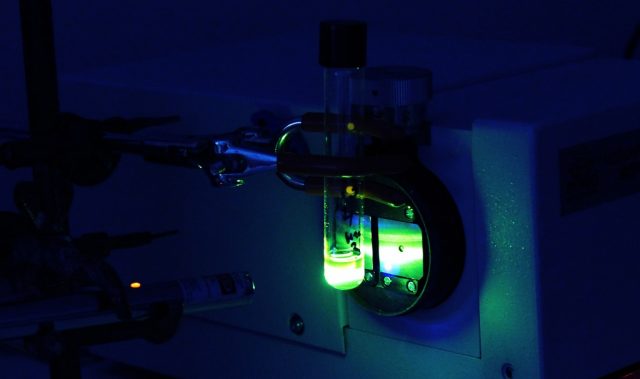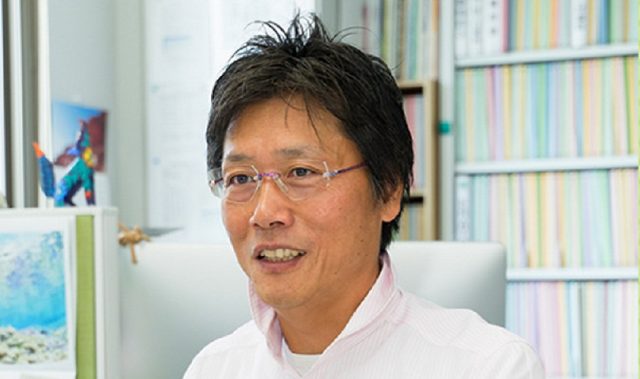
AsianScientist (Oct. 12, 2017) – Scientists in Japan have developed organic materials that retain their glow for more than an hour after exposed to ambient light. They published their findings in Nature.
Based on a process called persistent luminescence, glow-in-the-dark materials work by slowly releasing energy absorbed from ambient light. Used in watches and emergency signs, commercial glow-in-the-dark materials are based on inorganic compounds and include rare metals such as europium and dysprosium. However, these materials are expensive, require high temperatures to manufacture and scatter light when ground into powders for paints.
Carbon-based organic materials, similar to those used in plastics and pigments, can overcome many of these disadvantages. They can be excellent emitters and are already widely used in organic light-emitting diodes (OLEDs). But achieving long-lived emission has been difficult, and the longest emission from organic materials under indoor lighting at room temperature was typically only a few minutes.
In this study, researchers at Kyushu University’s Center for Organic Photonics and Electronics Research (OPERA) have created an organic material with light emission lasting for over an hour by mixing two types of molecules, one an electron donor and the other, an electron acceptor.
“Many organic materials can use energy absorbed from light to emit light of a different color, but this emission is generally fast because the energy is stored directly on the molecule that produces the emission,” said Assistant Professor Ryota Kabe at Kyushu University who is the lead author on the paper.
“By contrast, our mixtures store the energy in electrical charges separated over a longer distance. This additional step allows us to greatly slow down the release of the energy as light, thereby achieving the glow-in-the-dark effect,” he added.
In the mixtures, absorption of light by an electron acceptor gives the molecule extra energy that it can use to remove an electron from an electron donor. This transfer of an electron is effectively the same as a positive charge being transferred from the acceptor to the donor.
The extra electron on the acceptor can then hop to other acceptors and move away from the positively charged donor, resulting in separation of the charges. The separated charges gradually come back together, some slowly and some more quickly, and release their energy as light over the span of almost an hour. This process is similar to what occurs in organic solar cells and OLEDs. The key difference, however, is that the charges can exist in a separated state for very long periods of times.
“With organics, we have a great opportunity to reduce the cost of glow-in-the-dark materials, so the first place we expect to see an impact is large-area applications, such as glowing corridors or roadways for added safety,” said Professor Chihaya Adachi, Director of OPERA.
“After that, we can start thinking about exploiting the versatility of organic materials to develop glow-in-the-dark fabrics and windows, or even bio-compatible probes for medical imaging,” he added.
Challenges remain before the material can be used in practical contexts, foremost among them is the sensitivity of the electron transfer process to oxygen and water. Protective barriers are already used in organic electronics and inorganic glow-in-the-dark materials, so the researchers are confident that a solution can be found. They are also looking into new molecular structures to increase the emission duration and efficiency, as well as to change the color of the light produced.
The article can be found at: Kabe & Adachi (2017) Organic Long Persistent Luminescence.
———
Source: Kyushu University.
Disclaimer: This article does not necessarily reflect the views of AsianScientist or its staff.












